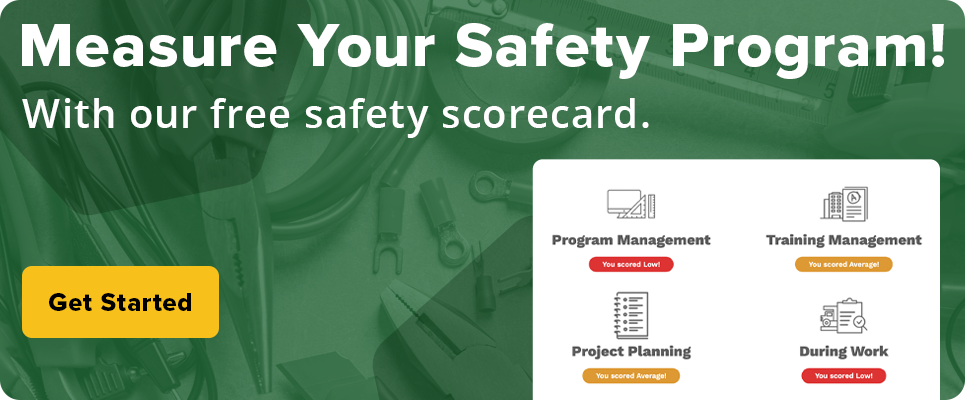
You care about the safety of your workers. Your company probably has good intentions when it comes to keeping your workers safe, but you know you should be doing more. You aren’t quite sure what that looks like because you don’t have a safety background. You also aren’t quite ready to hire a dedicated safety professional, and that’s all okay.
You aren’t the first contractor to feel lost in the safety abyss, and you don’t have to do it alone. We’re here to help! We’ll begin with discussing JHA’s and what that entails.
(Learn about the importance of toolbox talks and how they can help your workforce stay safe.)
What is a Job Site Hazard Assessment?
A Job Site Hazard Assessment, commonly referred to as a JHA, is a report that a foreman completes with their crew on the job site every morning before work starts. It is designed to focus the crew’s attention on safety and to take preventative measures to ensure incidents don’t occur.

3 Components of a Job Site Hazard Assessment
Other than collecting the location details at the start and signatures at the end, here are the three main parts of a JHA:
1. The Tasks
- Workers identify what they will be doing specifically that day
- Examples: load material, demolition, install product, etc.
2. The Hazards
- Based on the tasks for the day, create a list of potential hazards
- Examples: climbing ladders, working at heights, working with an open flame, extreme hot/cold weather, large machines, etc
3. The Controls
- For every hazard listed, determine what controls will be used to eliminate, contain or reduce each hazard.
- Examples: secure ladders, use personal fall arrest systems, wear personal protective equipment, take breaks to warm up / cool down, only trained employees operating machines, etc.
My Workers Don’t Have the Knowledge to Fill Out A JHA
The main issue with a JHA is how they are filled out, and typically that is not very well. Most crews are able to list tasks and hazards, as they generally know what parts of their job are potentially dangerous.
The problem arises when they aren’t knowledgeable enough to fill in the control section. We don’t blame them for this, they are construction experts, not safety reps. So this section tends to contain guesses, or worse, is left blank, leaving your workers with inaccurate and incomplete safety plans.
Cue the downward spiral; the less they know, the less effort they put into it, and the less the exercise is useful until, eventually, it just isn’t done at all, and you are right back here looking for help.
The Solution
This is why we created our own electronic JHA that automatically populates potential controls for each hazard selected. When your workers say they are using a ladder, they are provided with 4 or 5 ways to ensure they set up and use the ladder safely, all they have to do is check the boxes to create the plan, and then follow it.

Filling it out is easy, and your crews will consider it a useful resource, which means they will actually do it. Our JHA is more than a form, it’s a teaching tool that makes your job site safer, and provides your company with the documentation you need if there ever was an incident.
Regardless of the process you choose, you are on the right track because a JHA a day helps keep incidents away!
Share Article
Keep on current news in the construction industry. Subscribe to free eNews!



